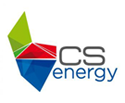Products & Equipment

-

Buhler Baseline Portable Probe Type
The portable Baseline series gas probe has a light weight, a compact size and a convenient range of accessories.
-

Buhler BDA 02 Ex Particle Monitor
The BDA 02 Ex particle monitor is one version in a series for this scope of application.
-

Buhler BF2-S Absorption Filter
Using so-called "self-cleaning" gas filters is worth considering for sample gas systems where secondary contamination primarily consisting of larger particles are to be expected.
-

Buhler BÜNOx 2+ Gas Converter
In order to protect humans and the environment, the emission of nitric oxides must be reduced as much as possible.
-

Buhler Condensate Drains
In extractive gas analysis it is important to protect the measuring cells from any type of contaminants.
-

Buhler CU-EMA+ Cooling Unit
The CU-EMA+ series features a new generation heat exchangers with a particularly low wash out effect of watersoluble components.
-

Buhler CV-3, CV-6, CV-10 Condensate Vessels
In the chemical industry, petrochemistry or biochemistry, reliable process control relies on prompt and exact determination of the operating parameters.
-

Buhler Denox-MB Sample Gas Probe
In many applications gas analysis is key for safe and efficient control of process flows, environmental protection, and quality assurance.
-

Buhler Dosing Unit EMIDos
One conditioning step in extractive analysis of process and emissions gases is reliable, constant reduction of humidity in the sample gas.
-

Buhler EGK 1 Ex2 Sample Gas Cooler
The EGK 1 Ex2 is ATEX and IECEx approved and is suitable for operation in explosive zones with up to 2 gas paths.
-

Buhler EGK 10 Sample Gas Cooler
The basic components of the EGK 10 correspond to the EGK 4 series, however features a higher cooling capacity and large flow rates, optimised specifically for bypass applications.
-

Buhler EGK 2A Ex Sample Gas Cooler
This gas cooler was designed specifically for use in explosive areas.
-

Buhler EGK 4S Sample Gas Cooler
EGK series compressor sample gas coolers feature a construction design which ensures they maintain an extremely stable gas outlet dew point.
-

Buhler GAS 222 Sample Gas Probe Series
The Buhler GAS 222 Sample Gas Probe Series is engineered for reliable and efficient extraction of gas samples in various industrial applications.
-

Buhler GKH Directional Valves
These reversing taps are primarily used to switch analysis flows. They are available with different switching functions.
-

Buhler GL 1-3 Condensate Vessels
In sample gas conditioning systems which cannot be pressurised, condensate accumulating in the sample gas coolers must be removed with peristaltic pumps or collected in condensate traps.




















